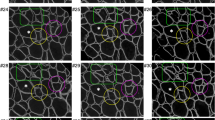Abstract
DENERVATED skeletal muscle fibres have long been known to show spontaneous fibrillation potentials, this being one of the features resulting from the removal of the trophic influence of the motor nerve1. Electromyography (EMG) has shown spontaneous fibrillations in human myopathies such as myositis or muscular dystrophy2–6, but their true incidence and mechanism is still obscure. We propose that myopathic fibrillations result from segmental necrosis of muscle fibres so that a distal fibre segment is separated from the part carrying the motor endplate. We show here, first, that after experimental myotomy in the baboon biceps muscle, the nerve-free segments develop fibrillation after a consistent delay and second, that by comparing different clinical types of human myopathies a correlation can be found between the incidence of focal necrosis and spontaneous fibrillation potentials. Our findings are consistent with our previous report of collateral innervation of newly formed nuscle fibres in Duchenne muscular dystrophy7.
Similar content being viewed by others
References
Thesleff, S., and Ward, M. R., J. Physiol. Lond., 244, 313–323 (1975).
Norris, F. H., and Chatfield, P. O., Electroenceph. clin. Neurophysiol., 7, 391–397 (1955).
Eaton, L. M., and Lambert, E. H., J. Am. med. Ass., 163, 1117–1124 (1957).
Smith, H. L., Amick, L. D., and Johnson, W. W., J. Pediat., 69, 67–79 (1966).
Buchthal, F., and Rosenfalck, P., Electroenceph. clin. Neurophysiol., 20, 321–336 (1966).
Desmedt, J. E., and Emeryk, B., Am. J. Med., 45, 853–872 (1968).
Desmedt, J. E., and Borenstein, S., Nature, 246, 500–501 (1973).
Buchthal, F., Guld, C., and Rosenfalck, P., Acta physiol., scand., 35, 174–190 (1955).
Desmedt, J. E., Acta Neurol. Belg., 58, 977–1017 (1958).
Gilliatt, R. W., and Hjorth, R. J., J. Neurol. Neurosurg. Psychiat., 35, 335–341 (1972).
Harris, J. B., and Thesleff, S., Nature new biol., 236, 60–61 (1972).
Belmar, J., and Eyzaguirre, C., J. Neurophysiol., 29, 425–441 (1966).
Katz, B., and Miledi, R., J. Physiol., 170, 389–396 (1964).
Miledi, R., Nature, 193, 281–282 (1962).
Desmedt, J. E., and Borenstein, S., Archs Neurol., Chicago (in the press).
Pearce, G. W., and Walton, J. N., J. path. Bact. 83, 535–550 (1962).
Adams, R. D., in Clinical Studies in Myology, part 2 (edit. by Kakulas, B. A.), 695–711 (Excerpta Medica, Amsterdam, 1973).
Adams, R. D., in The Striated Muscle (edit. by Pearson, C. M., and Mostofi, F. K.), 292–300 (Williams and Wilkins, Baltimore, 1973).
Desmedt, J. E., and Borenstein, S., in Exploratory Concepts in Muscular Dystrophy, part 2, (edit. by Milhorat, A. T.), 555–559 (Excerpta Medica, Amsterdam, 1974).
Author information
Authors and Affiliations
Rights and permissions
About this article
Cite this article
DESMEDT, J., BORENSTEIN, S. Relationship of spontaneous fibrillation potentials to muscle fibre segmentation in human muscular dystrophy. Nature 258, 531–534 (1975). https://doi.org/10.1038/258531a0
Received:
Accepted:
Issue Date:
DOI: https://doi.org/10.1038/258531a0
- Springer Nature Limited





